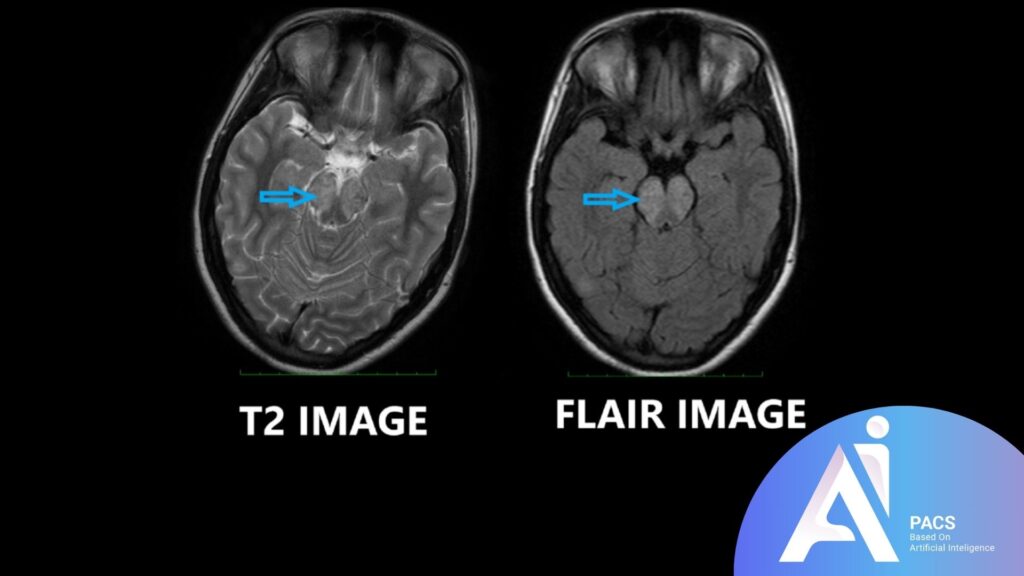
Understanding FLAIR in MRI: Key Insights for Detecting Brain Abnormalities
Article Overview
Why FLAIR is essential in brain imaging
FLAIR is essential in brain imaging because it enhances abnormalities’ visibility by suppressing cerebrospinal fluid (CSF) signals, which usually appear bright on MRI scans. This fluid suppression allows for clearer detection of lesions, inflammation, and other abnormalities the fluid’s brightness might otherwise obscure. FLAIR is particularly valuable in diagnosing conditions like multiple sclerosis, stroke, and infections, as it highlights areas of concern with high contrast, aiding in more accurate and early diagnosis.
How FLAIR Works
FLAIR, or Fluid-Attenuated Inversion Recovery, is a specialized MRI sequence designed to suppress fluid signals, primarily cerebrospinal fluid (CSF), to make subtle abnormalities in the brain more visible. This technique is particularly useful in highlighting lesions, inflammation, and other pathologies that bright fluid signals in conventional MRI images may obscure.
how FLAIR suppresses fluid signals
FLAIR suppresses fluid using a carefully timed inversion pulse that nullifies the signal from free-flowing fluids, like CSF, in the brain. During the scan, the inversion recovery sequence is set to a specific time that cancels out the signal from CSF, which would typically appear bright on standard MRI sequences. This leaves other structures and potential abnormalities, such as white matter lesions or areas of inflammation, more prominent in the image.
Comparison to other MRI sequences for context
Compared to standard T1 and T2 MRI sequences, FLAIR provides a unique advantage in brain imaging by isolating abnormalities near or within fluid-filled spaces. While T2-weighted imaging also highlights areas of high water content, the bright CSF can obscure details, especially near the brain’s ventricles. In contrast, FLAIR’s fluid suppression reveals subtle brain lesions, making it a crucial tool for diagnosing conditions like multiple sclerosis, stroke, and infections that might be harder to detect with other sequences.

What FLAIR Highlights in MRI Scans
FLAIR MRI is particularly effective at bringing certain brain abnormalities into sharper focus. By suppressing the bright signals of cerebrospinal fluid (CSF), FLAIR helps radiologists detect subtle changes in brain tissue that might be missed on standard MRI sequences. Here are some of the common abnormalities FLAIR can reveal:
- Lesions: FLAIR is highly sensitive to white matter lesions, especially around the brain’s ventricles, which are often linked to multiple sclerosis. These lesions appear as bright spots, making it easier to assess the extent and progression of the disease.
- Inflammation: Inflammatory conditions, such as encephalitis or meningitis, can cause swelling and abnormal signals in brain tissue. FLAIR can highlight these areas, helping to diagnose infections or autoimmune disorders affecting the brain.
- Strokes: In cases of ischemic stroke, FLAIR can reveal brain tissue damage after the acute phase. It helps identify areas of infarction, which appear as bright signals and provides valuable information for assessing stroke severity and treatment planning.
- Tumors: FLAIR is useful in identifying and monitoring brain tumors, particularly in differentiating tumor tissue from surrounding edema (swelling) and normal fluid spaces. Tumors often appear as hyperintense (bright) areas, allowing radiologists to distinguish tumor boundaries clearly.
Clinical Applications of FLAIR
FLAIR MRI is invaluable in diagnosing and monitoring various neurological conditions by providing a clear visualization of abnormalities that might be hidden in other MRI sequences. Below are some key neurological conditions where FLAIR is especially useful:- Multiple Sclerosis (MS): FLAIR is one of the primary imaging tools for detecting MS lesions, especially those near the ventricles. MS lesions in white matter appear bright on FLAIR, allowing for precise tracking of lesion number and location, which aids in diagnosing and monitoring disease progression.
- Stroke: FLAIR is highly effective for identifying areas of brain tissue affected by stroke, particularly in the subacute and chronic phases. For ischemic stroke, it helps highlight damaged areas with increased fluid content, supporting decisions about treatment and assessing long-term effects.
- Brain Infections (e.g., Meningitis): FLAIR can detect inflammation caused by meningitis or encephalitis by revealing bright, hyperintense regions in affected areas. This helps differentiate infectious from non-infectious inflammation, providing essential information for proper treatment.
- Brain Tumors: FLAIR is used to identify tumors by highlighting abnormal tissue while suppressing fluid signals. It helps differentiate between tumor tissue and surrounding edema, making it useful for planning surgery or other treatments and monitoring tumor growth or response to therapy.

Advantages and Limitations of FLAIR
FLAIR imaging has specific advantages that make it an essential tool in brain imaging but also has limitations. Understanding both helps radiologists and clinicians decide when FLAIR is the most appropriate imaging sequence, and other MRI types may be more effective.Benefits of using FLAIR for clearer imaging
- Enhanced Detection of Abnormalities: By suppressing cerebrospinal fluid (CSF) signals, FLAIR improves the visibility of abnormalities like lesions, inflammation, and other changes in brain tissue. This is particularly valuable for diagnosing conditions near fluid-filled spaces, such as multiple sclerosis lesions near the ventricles.
- Improved Contrast: FLAIR’s ability to suppress fluid signals increases contrast in certain brain areas, making distinguishing between healthy and abnormal tissues easier. This is useful for identifying subacute or chronic infarcts, infections, and tumors.
- Better Visualization of White Matter Lesions: FLAIR is highly sensitive to changes in white matter, making it ideal for detecting demyelinating diseases and other white matter disorders. This makes it the preferred sequence for tracking progression in multiple sclerosis.
Potential limitations, including when other MRI types may be preferred
- Sensitivity to Motion: FLAIR sequences take longer to acquire than other MRI types, making them more prone to motion artifacts. This can affect image quality, especially in patients with difficulty remaining still, such as young children or those with certain neurological conditions.
- Reduced Utility in Acute Stroke: FLAIR may not show changes clearly in the earliest phases of ischemic stroke (first few hours), so diffusion-weighted imaging (DWI) is often preferred for early stroke detection.
- Susceptibility to Signal Loss: FLAIR may have limitations in areas with high iron or calcification content, such as certain basal ganglia or hemorrhagic lesions. Sequences like T2*-weighted or susceptibility-weighted imaging (SWI) are sometimes better suited to detect these areas.
- Not Ideal for All Brain Structures: FLAIR’s fluid suppression can make certain areas, like the brainstem and posterior fossa, less clear. In these cases, standard T2-weighted imaging may provide a clearer picture.

Conclusion
In conclusion, FLAIR (Fluid-Attenuated Inversion Recovery) MRI is a powerful imaging technique that significantly enhances the detection of various brain abnormalities by suppressing cerebrospinal fluid signals. Its ability to reveal lesions, inflammation, strokes, and tumors makes it an invaluable tool in the diagnosis and management of neurological conditions such as multiple sclerosis and brain infections. While FLAIR offers numerous advantages, including improved contrast and visualization of white matter lesions, it also has limitations that necessitate using other MRI sequences in certain clinical scenarios. Understanding the role of FLAIR in MRI is essential for healthcare professionals to make informed decisions regarding imaging strategies, ultimately leading to better patient outcomes in neurological care.


Leave a Reply